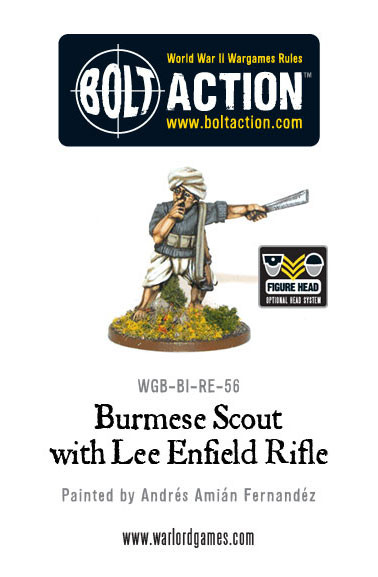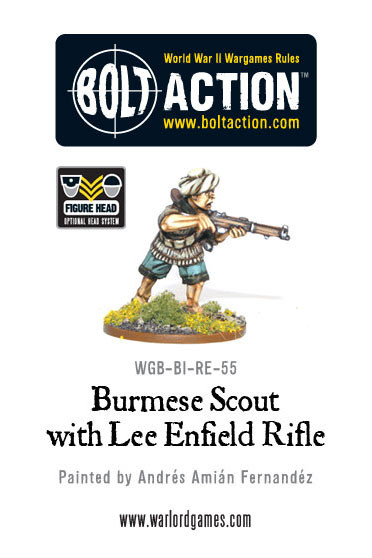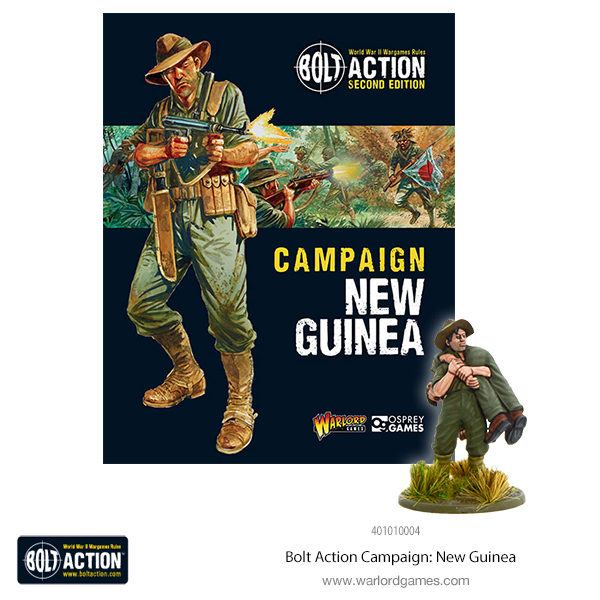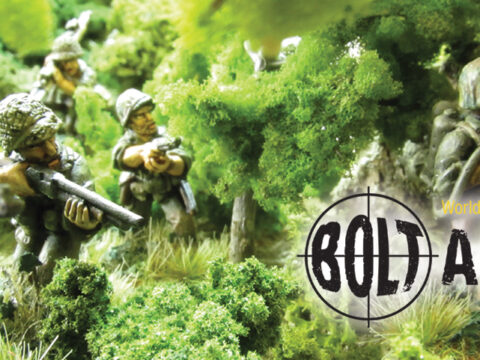Dr Rick Hudson dissects the Javanese Tribesmen and places them onto the Bolt Action battlefield.
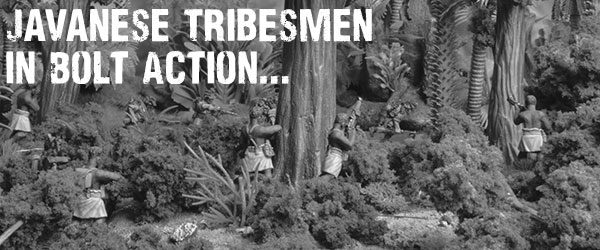
I’m a Bolt Action player with a specific interest in World War Two in the Far East; this is partly through general interest, but also through family and work connections. I’ve spent a lot of time visiting Indonesia, particularly Java, over the last few years and have become very interested in the island’s history. Java has formed the focus of many of my games and I’ve attempted to flesh out these games of Bolt Action to give them a more specific Javanese feel rather than being generic to the larger Far Eastern theatre as a whole. I do of course make great use of Empires in Flames: The Pacific and the Far East and Armies of Imperial Japan books, but have drawn upon my own research to develop a more local atmosphere for these games.
One thing I have done is incorporate indigenous forest tribes to these games of Bolt Action. These tribes are interesting as they are an ethnically distinct group of warriors who, to this day, are not only marginal but still live in a pre-industrial culture utilising near-stone age technology. As such, they make a novel and challenging addition to Far East games of Bolt Action, and I have outlined below a few guidelines for their inclusion in Bolt Action. While today the forest tribes are offered a protected status, during the WW2 period they were somewhat persecuted by the mainstream Indonesian population and were subject to much prejudice. Consequently, the allegiance of the tribes was ambivalent, to say the least, and they may be chosen by either Allied or Imperial Japanese player in a Javanese setting.
In terms of game mechanics, I utilise the details for – unsurprisingly – Native Irregulars as shown on page 79 of Empires in Flames. However, to represent their huge disadvantage in terms of technology I make changes to the weapons they have available as follows:
Unlike the generic Native Irregulars outlined in the unit descriptor, the forest tribes are not armed with rifles but more low-tech weapons. In close quarters combat, they are assumed to be armed with spears much like the Bamboo Spear Fighters detailed on page 25 of Armies of Imperial Japan. When shooting the tribesmen’s technological disadvantage is more significant: their ranged weapons are limited to a primitive bow – more like a European self-bow and nothing as sophisticated as a composite bow or longbow – and blow pipes and a variety of throwing weapons such as knives, axes and clubs.
To represent this, I have made the following ad hoc rulings
Not only do the tribesmen not have rifles, but their leader may not be given an SMG as an option.
Bows are represented simply by employing the rules for a regular rifle. This may seem an unsatisfactory ruling to some, but it works for the sake of ease if nothing else.
Blow pipes are represented by the rules for pistols, however, they do not have the Assault special rule applied to them.
Thrown weapons are also represented using the pistol rules (again without the benefit of the Assault rule). Importantly, these are ‘one use’ weapons and as such count as ‘One-shot’ weapons. You may well feel that using the pistol stats is somewhat over-generous, in which case I recommend reducing the range to 4”, if not going as low as 2”.
As an additional limitation, any tribal warrior may be armed with a spear and a throwing weapon; however, no more than 50% of a unit may be armed with bows or blowpipes. Furthermore, those warriors with either bows or blowpipes may not carry throwing weapons. In reality, bow or blowpipe armed men would not carry a spear either, however, they would be armed with some sort of hand weapon, and so – in game terms – they act in close quarters combat exactly like their spear-armed comrades (just to keep things simple).
Strategy and Tactics
To get the full advantage of using these tribal warriors it is best to utilise all the Special Rules given to Native Irregulars on page 79 of Empires in Flames. The forest tribes work best as harrying troops and should be utilised as such; indeed, their life expectancy will not be very high if used in any other way.
Your tribesmen on the table
Indigenous Indonesian warriors are – to my knowledge, please correct me if I’m wrong – not available as wargame figures – yet, so a certain amount of poetic licence is required when it comes to your choice of miniatures. Maori or Aborigine warriors are sorts of heading in the right direction, but perhaps stretch credibility just a little bit too far.
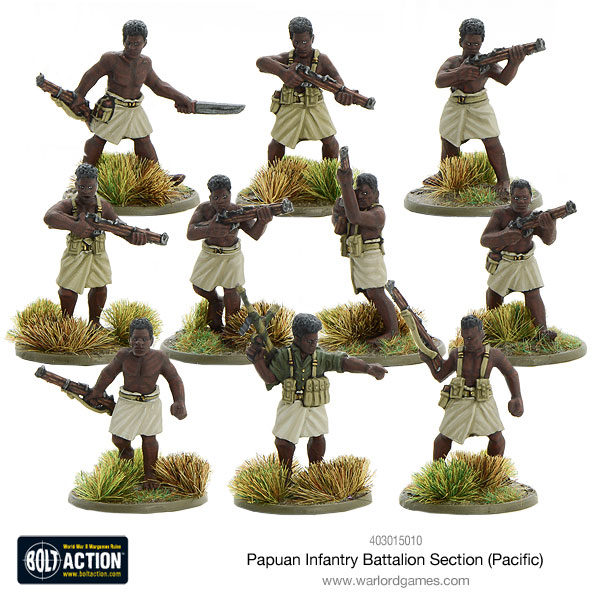 These guys come out this Friday, so keep your eyes out!
These guys come out this Friday, so keep your eyes out!
While I admit these guidelines are a bit rough and ready, and some players may feel they are far too loose, for me they work rather well and while they lack detail they do add to the mood of games and I believe enable me to play games of Bolt Action set in Java rather than just in some broad, non-specific Far Eastern country.
I must admit that my Indonesian history interest is becoming a bit of an obsession that is extending beyond Bolt Action. Hmm, pirates in Java for Donnybrook, anyone? Eighteenth Century Dutch army versus indigenous warriors? I’ve only just started…
Do you have an article within you? Are you itching to show your collection to the world of Bolt Action? Then drop us a line with a couple of pictures to info@warlordgames.com or share with all over at the Warlord Forum
Grab Empire in Flames book here!
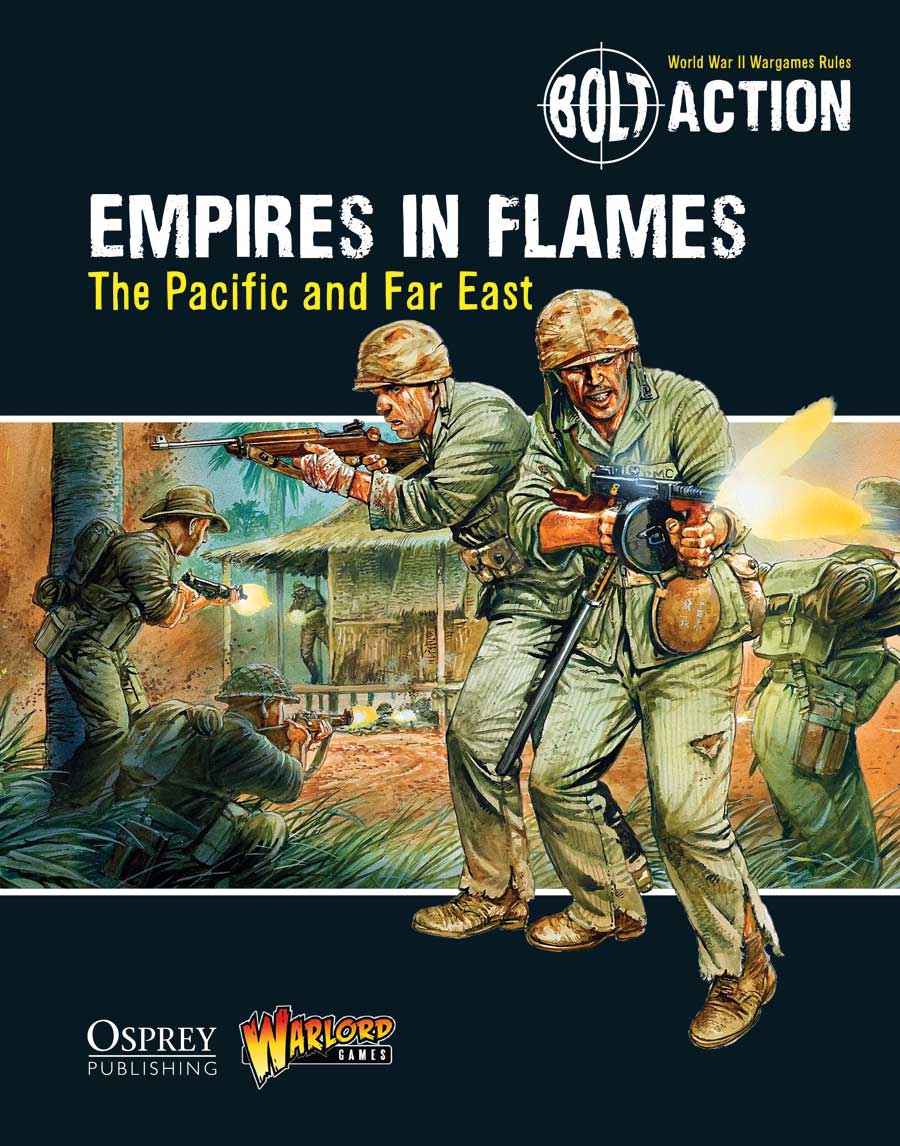
Theme-up your armies!
